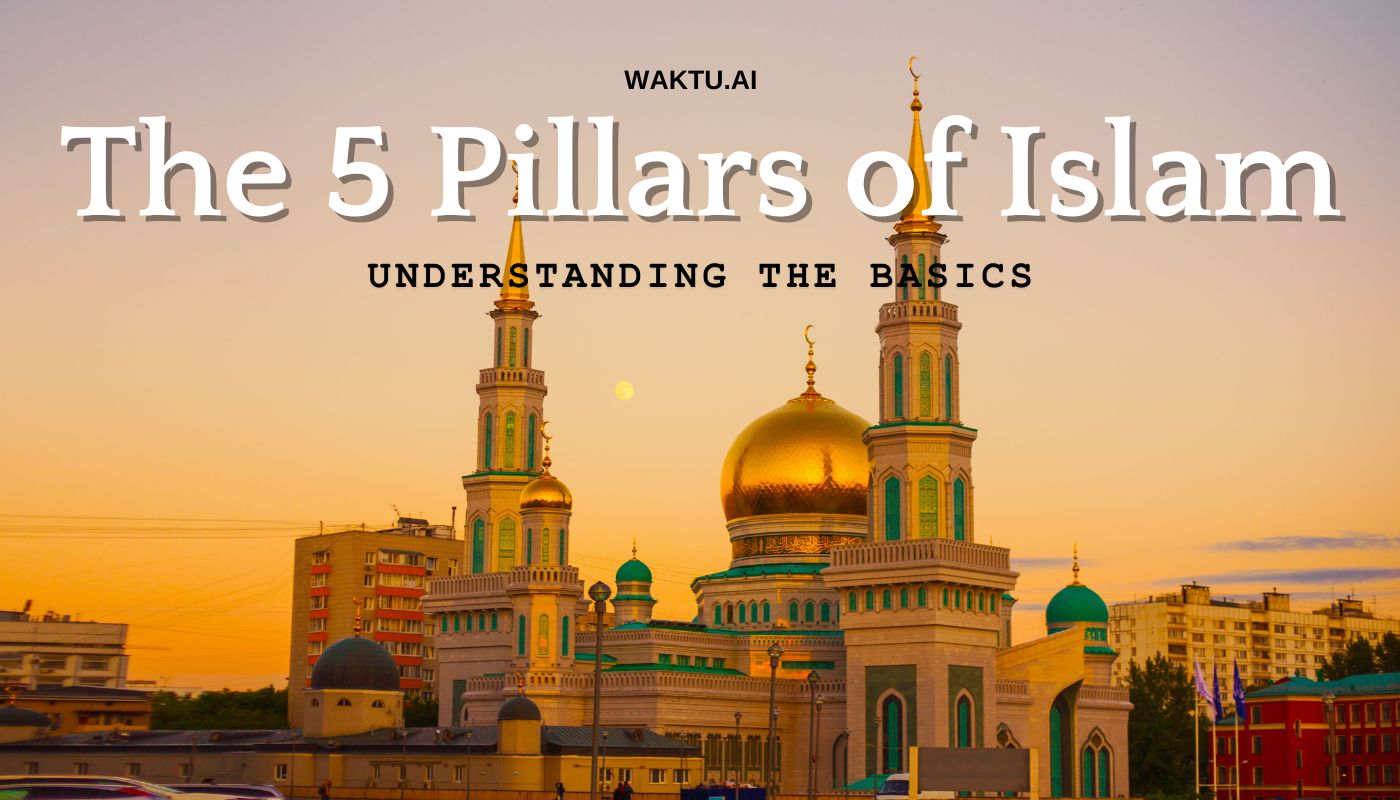Discover how the five essential practices in Islam can transform your life and bring true peace. Dive into detailed explanations and inspiring insights for each Pillar of Islam
Read this : Cara Menjawab Azan Dengan Betul
The Five Pillars of Islam

The Five Pillars of Islam represent the core beliefs and fundamental practices that characterize the Islamic faith. They serve as the spiritual foundation upon which the lives of Muslims around the world are built. The Five Pillars are:
1. Profession of Faith (Shahada)
The Shahada, or Profession of Faith, is the creed declaring the belief in the oneness of God and the acceptance of Muhammad as God’s prophet. The phrase, “There is no god but God, and Muhammad is the Messenger of God,” is central to Islam and is frequently inscribed in Arabic on architecture and various objects, including the Qur’an, Islam’s holy book of divine revelations.
One becomes a Muslim by reciting this phrase with profound conviction.
2. Prayer (Salat)
Salat, or the ritual prayer, is performed five times daily by Muslims facing the holy city of Mecca. These prayers take place at dawn, noon, mid-afternoon, sunset, and evening. Each session of prayer includes recitations from the opening chapter (sura) of the Qur’an and can be performed individually or collectively.
While prayer can be conducted anywhere, it is common to perform it on a prayer mat. On Fridays, the noonday prayers are congregational, often held in a mosque, led by an imam. Post-prayer sermons focus on Qur’anic teachings and relevant religious discussions.
3. Almsgiving (Zakat)
The act of Zakat embodies the third pillar, where Muslims are required to donate a fixed portion of their income to those in need, as per Islamic law. This act of charity is deemed both a spiritual duty and a means to aid the community.
Contributions often fund the construction of mosques, schools, hospitals, and other essential public utilities. This charitable practice ensures support for the less fortunate and signifies a commitment to societal welfare.
4. Fasting (Sawm)
During the holy month of Ramadan, the ninth month of the Islamic lunar calendar, all able-bodied adult Muslims observe a fast, known as Sawm. From dawn until sunset, they abstain from eating, drinking, and other physical needs.
This practice serves to heighten spiritual discipline, self-control, and empathy towards the less fortunate. The fast also commemorates the first revelation of the Qur’an to Muhammad and fosters a sense of community and religious devotion.
5. Pilgrimage (Hajj)
The Hajj is the pilgrimage to the holy city of Mecca that every Muslim who is physically and financially able must undertake at least once in their lifetime. Central to the Hajj is the Ka’ba, a cubical structure draped in black fabric located in Mecca’s Grand Mosque (Haram Mosque).
Pilgrims engage in a series of rituals, including walking around the Ka’ba seven times and running between the hills of Safa and Marwa, emulating the actions of Abraham and his family. The pilgrimage culminates in performing symbolic acts such as the stoning of the devil in Mina.
Visual and Historical Context
The educational content includes various images and art pieces, such as a 17th-century portrait of a Mughal prince praying. This artwork showcases the prince on a prayer mat featuring an arch, symbolizing the gateway to Paradise. The simplicity of his surroundings signifies piety and spiritual focus.
An additional illustration from the mid-16th century depicts the inner enclosure of the Haram Mosque in Mecca, highlighting significant pilgrimage landmarks. This acting as a visual guide to pilgrims. The illustration details the six minarets, mosque lamps, and the ritual spaces, providing a comprehensive understanding of the hajj procedures.
Baca Juga : Cara Sujud Syukur